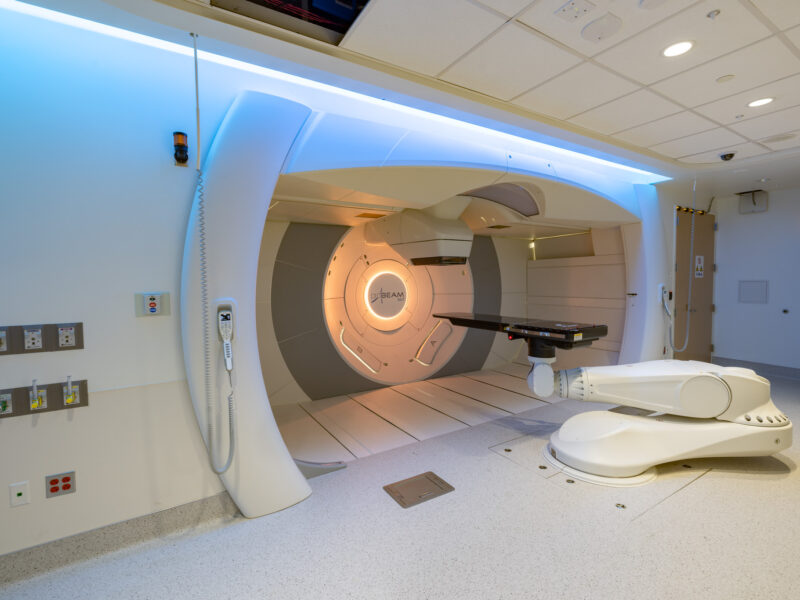Looking to the Future: Optimizing Fertility Preservation Decisions in Pediatric Patients Newly Diagnosed with Cancer
Looking to the Future: Optimizing Fertility Preservation Decisions in Pediatric Patients Newly Diagnosed with Cancer https://pediatricsnationwide.org/wp-content/uploads/2019/05/AdobeStock_99773651-wait-times-header-1024x575.gif 1024 575 Katie Brind'Amour, PhD, MS, CHES Katie Brind'Amour, PhD, MS, CHES https://pediatricsnationwide.org/wp-content/uploads/2021/03/Katie-B-portrait.gif- May 10, 2019
- Katie Brind'Amour, PhD, MS, CHES

With about 84 percent of children, adolescents and young adults diagnosed with cancer surviving five years or more, the population of survivors is large and growing. Recent estimates from the National Cancer Institute suggest nearly half a million pediatric cancer survivors currently live in the United States. As this population ages, focus on their health needs must shift to include long-term side effects of treatment, not least of which is impaired fertility.
“Among males in particular, more than half may experience impaired fertility as a late effect of cancer therapy,” says Leena Nahata, MD, medical director of the Fertility and Reproductive Health Program and a pediatric endocrinologist at Nationwide Children’s Hospital. “This is definitely a vulnerable population, and fertility preservation remains underutilized.”
That’s why Dr. Nahata worked with a multi-disciplinary team to design a fertility preservation program to remove system-related barriers to uptake. Since the program’s official start in 2015, the program has initiated automatic orders for a consultation with a fertility preservation expert for all children with a new cancer diagnosis. In these consults, nurse practitioner Stacy Whiteside, APRN, patient navigator for the Fertility & Reproductive Health Program at Nationwide Children’s, discusses preservation methods — which vary by age but include novel experimental options such as ovarian and testicular tissue cryopreservation for prepubertal children — as well as financial considerations, timing and available research studies.
One such study is Dr. Nahata’s recently funded K08 grant from the National Institutes of Health to optimize fertility preservation decision-making among adolescent males with a new cancer diagnosis.
“Numerous retrospective studies have shown survivors and their parents experience distress and regret over missed opportunities for fertility preservation, which made me feel we need to move the needle on uptake and we need to do it at the time decisions are made,” says Dr. Nahata. “Building consensus within families and facilitating conversations between adolescents, parents and providers about this topic in a time-sensitive manner is crucial.”
Dr. Nahata’s prospective pilot research administers a decision tool to adolescent and young adult male patients and their parents or caregivers to facilitate discussion and decision-making at the time of their initial consultation. They are then surveyed and interviewed one month later to help evaluate the feasibility and benefits of the decision tool. The program also tracks uptake of preservation options among participants and factors associated with their decisions. Data obtained from this pilot will provide the foundation for a randomized-controlled trial in the next phase of the research.
To make prospective decision aids as effective as possible, however, Dr. Nahata and her colleagues believe a systems-based process must first be in place in any institution hoping to impact uptake.
“It doesn’t start or stop with oncology or endocrinology — so many teams have a special niche that contributes to the success of our program,” says Anthony Audino, MD, one of two pediatric oncologists actively involved in the Fertility & Reproductive Health Program at Nationwide Children’s. Other subspecialties include gynecology, urology and psychology. “By collaborating and having an automatic referral process, as well as broad institutional awareness and buy-in, we ensure patients get the best care.”
Of course, discussing fertility, insurance coverage and future reproduction goals may seem awkward or even irrelevant to families facing a new diagnosis. But Whiteside has found that bringing fertility preservation into the care discussion at the time of diagnosis also offers families a beacon of hope.
“It can be overwhelming, but it can also be very comforting,” says Whiteside. “Somebody, in the midst of all that is going on, is thinking about the future for their child, thinking they will have a future. It’s something to hold onto in the chaos — that their child will be a survivor. Because of that, our counseling and research efforts are generally well received.”
More than 95 percent of patient families approached to take part in the research so far have agreed to do so. Recruitment of the 40 planned patients for the pilot study is more than halfway complete, and early feedback is promising.
“We have found that adolescents and their parents have appreciated the opportunity to consider fertility preservation more in-depth,” says Dr. Nahata. “I think the key is that we’re taking the family-centered approach, since recent research has highlighted the importance of parents’ recommendation on the ultimate decision to pursue fertility preservation.”
Once fertility preservation decisions are made, Whiteside coordinates all of the necessary steps, from obtaining samples to working with a tissue storage bank offsite. When funding concerns arise — since the procedure is not always covered by insurance in Ohio — she can also help find funding from charitable organizations.
“We hope that by doing this, no patient comes back 10 years from now saying they didn’t know about their options or that they feel they’ve missed their opportunity to have a family,” says Dr. Audino.
Image credit: Adobe Stock
About the author
Katherine (Katie) Brind’Amour is a freelance medical and health science writer based in Pennsylvania. She has written about nearly every therapeutic area for patients, doctors and the general public. Dr. Brind’Amour specializes in health literacy and patient education. She completed her BS and MS degrees in Biology at Arizona State University and her PhD in Health Services Management and Policy at The Ohio State University. She is a Certified Health Education Specialist and is interested in health promotion via health programs and the communication of medical information.
-
Katie Brind'Amour, PhD, MS, CHEShttps://pediatricsnationwide.org/author/katie-brindamour-phd-ms-ches/April 27, 2014
-
Katie Brind'Amour, PhD, MS, CHEShttps://pediatricsnationwide.org/author/katie-brindamour-phd-ms-ches/April 27, 2014
-
Katie Brind'Amour, PhD, MS, CHEShttps://pediatricsnationwide.org/author/katie-brindamour-phd-ms-ches/April 27, 2014
-
Katie Brind'Amour, PhD, MS, CHEShttps://pediatricsnationwide.org/author/katie-brindamour-phd-ms-ches/April 28, 2014
- Post Tags:
- Endocrinology
- Hematology/Oncology/BMT
- Posted In:
- Features







